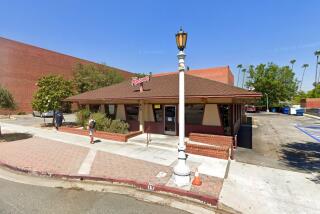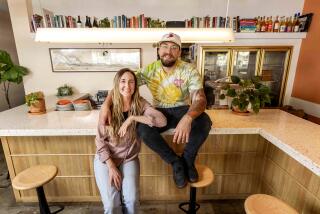Raising Cane’s backtracks on plan to turn Norms into a chicken joint

- Share via
The historic Norms on La Cienega Boulevard will not be changed into a fast-food chicken joint, according to the building’s owner.
Raising Cane’s, the restaurant chain that owns the iconic Googie-style diner, had planned to convert the Norms location into one of its chicken-strips locations when Norms’ lease lapsed at the end of 2026. But after community outcry about the decision, the company has reversed course.
“We have heard the community’s concerns, and we are in discussions with Norms about the future of the site,” said Dale Goss, the senior vice president of real estate for Raising Cane’s, in a brief statement.
The company canceled its presentation to the Los Angeles Cultural Heritage Commission last week, where it had planned to outline its goal of transitioning the space into a Raising Cane’s.
It is not clear what the chain plans to do with the space.

Raising Cane’s had gone so far as to develop a rendering of what the space would look like if it were converted. The famous sawtooth neon Norms sign would have said Cane’s instead.
Norms has been a designated historic monument since 2015, which means any plan to change the building’s function would have to be presented to the Cultural Heritage Commission.
“The community spoke out eloquently about what Norms means to them, online and in the media and with our phone calls and emails seeking a meeting with Raising Cane’s owner Todd Graves, and we all got our message across,” wrote Kim Cooper and Richard Schave on their blog Esotouric’s Secret Los Angeles, which broke the news of Raising Cane’s plans.
Norms La Cienega was designed by Louis Armet and Eldon Davis in the Googie style in 1957.
Googie is a futuristic architectural style that started in Southern California and featured sharp geometric shapes, sweeping curves and bright, sometimes neon, lights. The style was often used on gas stations and coffee shops. Other SoCal examples include the Theme Building at Los Angeles International Airport and the Anaheim Convention Center.
More to Read
Sign up for Essential California
The most important California stories and recommendations in your inbox every morning.
You may occasionally receive promotional content from the Los Angeles Times.











